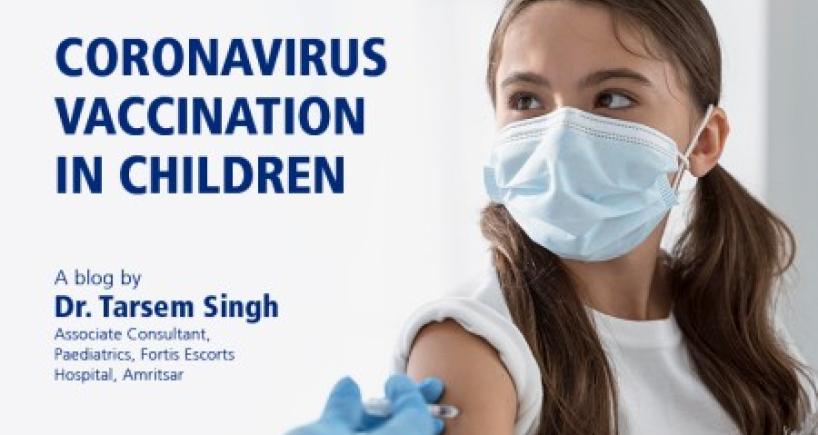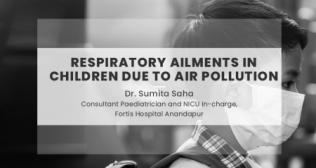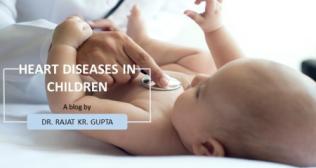
Coronavirus Vaccination In Children
Children of all ages are susceptible to coronavirus disease 2019 (COVID-19). Almost 70% of SARS CoV-2 infections in children are asymptomatic. When symptomatic, the symptoms are usually mild and critical illness and hospitalizations are extremely rare. Children account for ~1.5% of all COVID hospitalizations. Studies done in the initial stages of the pandemic suggested that children do not participate significantly in the chain of transmission . According to the National Centre for Disease Control data as of 26/2/21, 3.9% of cases occurred in the 0-10 year age group and 7.99% in the 11-20 year age group . The morbidity and mortality of COVID-19 in children are much lower than that seen in adults and the elderly . Thus, the assessment of benefit vs risk of COVID vaccination in children is complex.
OBJECTIVES OF COVID VACCINATION IN CHILDREN
1.Reduction in Disease Incidence, Morbidity and Mortality
The surge in COVID-19 cases following the rapid spread of more transmissible variants has resulted in a steep increase in the number of cases and hospitalization rates in children in many countries. This may be amplified if more transmissible variants predominate in the coming months. This further underscores the need for COVID-19 vaccination in children.
In USA, during the peak of the Delta wave, the weekly hospitalization rate among children aged 0-4 years increased nearly 10 times. Nearly one third of adolescents aged 12–17 years hospitalized with COVID-19 during March 2020–April 2021 required intensive care, and 5% of those hospitalized required endotracheal intubation and mechanical ventilation . The current surge of COVID-19 in UK, is being primarily driven by high levels of infection in school-age children, with more than a third of all recent cases being reported in those under 15 years of age [4]. In USA, during the period from June 20 to July 31, 2021, the hospitalization rate among unvaccinated adolescents (aged 12–17 years) was 10.1 times higher than that among fully vaccinated adolescents, underlining the utility of vaccines in reducing the morbidity and mortality associated with COVID 19 in adolescents.
Age distribution data from India revealed that children in the age group 0-10 years accounted for 3.28% of all cases, and individuals 11-20 years accounted for 8.03% of all cases in the first wave. Corresponding figures in the second wave were 3.05% and 8.57%, respectively [5]. Although the proportion remained almost similar in both waves, the second wave involved almost twice the number as in the first wave, with a consequent increase in the absolute numbers of children needing hospitalization and ICU care.
In a study conducted in Tamil Nadu and Andhra Pradesh, in the pediatric age group, the case fatality rate was highest in the 0-4 years age group [median (IQR) 0.16% , which was comparable to that observed in the 18-29 years age group but lower than that observed in the older age groups [6].
A systematic review and meta-analysis of severe COVID-19 infection and pediatric comorbidities concluded that children with comorbidities have a higher risk of severe COVID-19 and associated mortality than children without underlying disease . Severe COVID-19 was present in 5.1% of children with comorbidities as compared to 0.2% in children without comorbidities. Children with comorbidities had higher risk of severe COVID-19 [RRR 1.79 (95% CI 1.27 – 2.51)] and COVID-19-associated mortality [RRR 2.81 (95% CI 1.31 – 6.02)] as compared to healthy children.Children with obesity had a relative risk ratio of 2.87 (95% CI 1.16 – 7.07).
2.Prevention of Complications
Multi-Inflammatory syndrome in children (MIS-C) first reported in April, 2020, is generally reported during the weeks following a peak in COVID-19 disease. MIS-C may need hospitalization and ICU care in addition to expensive medications [11]. The burden of MIS-C in our country has previously been documented [12-14]. By preventing SARS-CoV-2 disease, COVID-19 vaccines may prevent MIS-C. Some patients who have recovered from COVID-19 may experience persisting symptoms after from 0-27% [16, 17]; however, similar literature regarding long COVID-19 in children is not available from India. Similar to MIS-C, COVID-19 vaccines may prevent long COVID; although, currently there is no data available to support this statement. A report of three children with subacute neuropsychiatric impairment following COVID-19 and the detection of intrathecal anti–SARS-CoV-2 antibodies also raises the spectre of direct involvement of the central nervous system by the SARS-CoV-2 virus [18].relative risk ratio of 2.87 (95% CI 1.16 – 7.07)[8].
In a multi-centric study done in five major institutions across India, 44% of 402 children had some underlying comorbidity, malignancy (leukemia and other malignancy) followed by cardiac diseasewas the most common underlying comorbidity. In this study, children with underlying disease had an odds ratio of 8.85 (6.07–12.91) for moderate-severe disease [9]. In a study done from a dedicated COVID-19 hospital in India, 30 out of 100 admitted children had underlying comorbidities, 60% had severe disease, and the presence of underlying comorbidities and the number of comorbidities were significant predictors of severity of the disease [9].
3.Reduction of Transmission
School-age children and adolescents can efficiently transmit SARS-CoV-2 to household members, which may lead to hospitalization of adults who are secondarily infected [19]. Recent data suggest that adolescents contribute significantly to household transmission, and rates of transmission by this age group (11-18 years) may be higher than that in adults [20] The highest probability of transmission, given exposure, in an Indian study was shown to be within case-contact pairs of similar age, and this association was strongest among children aged 0 to 14 years and among adults aged ?65 years [6].With reopening of schools, outbreaks have been reported from all over the world. High attack rates of 44% have been reported at a youth camp in Georgia, USA suggesting that SARS-CoV-2 can transmit readily in young populations [21].
Vaccination of children may reduce transmission. Some of the COVID vaccines in use have been shown to reduce infection and thus transmission. However, during the Delta surge, vaccinated and unvaccinated individuals had similar viral loads in the nasopharynx.
Prevention of psychosocial issues due to prolonged school closure: The COVID-19 pandemic has resulted in drastic changes in the lives of children and adolescents. Restrictive measures, such as nationwide lockdown, school closures, online lectures, and quarantines, have resulted in significant adverse psychological effects on children, and adolescents [23–25]. COVID associated obesity has become a real issue [26]. Children are losing out on their development and learning opportunities, including nutritional deficiencies and delayed immunizations. Vaccination and other measures to reduce community transmission may help to avert some of these indirect effects of the pandemic. Although vaccinations and school reopening are not linked, parents will be more confident about sending their vaccinated children to school.
Herd immunity: Herd immunity against COVID-19, either through vaccinations or natural infection, is the logical way to terminate the pandemic. Initially, a population immunity of 65–70% was estimated as the threshold for herd immunity [27]. However, ongoing vaccine hesitancy and the circulation of more transmissible variants have raised the bar for achieving herd immunity. The goal of attaining herd immunity can never be achieved if children, who constitute 20-35% of the population, are excluded from the vaccination process. If unprotected, children could act as reservoirs of infection and may contribute to the rise of variants in the future.
Potential risks of vaccinating children: Myocarditis has been recognized as a rare complication of mRNA vaccines against COVID-19, especially in young adult and older adolescent males [28]. Of the 8.9 million
U.S. adolescents aged 12–17 years, who had received Pfizer-BioNTech vaccine, up to July 16, 2021, there were 9246 adverse events reported, of which 9.3% were serious adverse events, including myocarditis (4.3%). It should be noted that most of these cases were mild and resolved spontaneously.
The risk, if any, in the younger age groups is unknown.
Vaccine-induced thrombotic thrombocytopenic purpura (VITT) is a rare but potentially life threatening adverse effect following adeno-vectored COVID vaccines administered to those >18 years. As this vaccine has not been administered below 18 years of age, the risk, if any, in the younger age groups is unknown.
VACCINNES AVAILABLE FOR PEDIATRIC POPULATION
Internationally, only the Pfizer and the Moderna vaccines have received emergency use authorization (EUA) for use in children between 12 and 17 years of age. The Pfizer vaccine has received EUA for use in children 5-11 years. In India, ZyCov-D (Cadilla Health case) has received EUA in the age group 12-17 years, while Covaxin (Bharat Biotech Ltd) has received EUA for 2-18 years.
IAP-ACVIP RECOMMENDATIONS
1. The IAP supports the Government of India’s decision to extend the COVID-19 vaccination program to children between 2-18 years of age. Children with high-risk conditions should be immunized on a priority basis, as follows:
i) high-risk population in age group 2-18 years
ii) children aged 2-18 years living with high-risk individuals
iii) all population below 18 years of age (in an age de-escalation manner)
Although the Fourth All-India sero-survey showed a positivity of 57.2% in the 6-9 years age group and 61.6% in the 10-17 years age group, it should be noted that antibodies and efficacy decline with time. Studies done with the mRNA vaccines have shown that unvaccinated individuals are more than twice as likely to be reinfected with COVID-19 than those who were fully vaccinated after initially contracting the virus. Moreover, the antibody responses were superior in adults hospitalized with COVID 19–like illness, who had prior vaccination with a mRNA vaccine compared to those with prior natural infection.
The IAP strongly recommends that its members should be made a part of the process of vaccinating children, either by vaccinating in their clinics or as a part of the government initiative.
2. Pediatricians are well acquainted with cold chain, vaccine administration skills, AEFI (adverse events following immunity) recognition and management, and biomedical waste disposal. They also have the infrastructure to maintain the rigorous protocols for vaccination, as put forth by the regulatory authorities.
Their rapport with children and their parents will provide the most reassuring situation for vaccinating the children in the clinics and can lessen vaccine hesitancy and vaccine refusal. Local and district branches of IAP can be involved in the process to disseminate information, education and communication (IEC) activities via print media, social media, radio and television in local languages. This may be important for better acceptance by the parents, of COVID vaccines for children.
Pediatricians and parents have to be convinced about the safety and efficacy of COVID-19 vaccines in children. Study data has to be provided to the pediatricians and parents before embarking on any COVID-19 vaccination programs for children.
3. The IAP supports a school-based vaccination program, as this is the quickest way to achieve maximum immunization coverage. However, this should not be made mandatory, and the parents should be offered a choice of administering the vaccine to their children, in the schools or in the clinics of their pediatricians.
4. School-based centers should have a medical personnel trained to handle emergencies, nursing and administrative staff, emergency medications and equipment, tie-up with the closest hospital for emergency care, and immediate availability of transport to the referral hospitals.
5. The IAP recommends administering currently available COVID-19 vaccines and other scheduled childhood vaccines, either simultaneously or at any interval between them.
6. The IAP recommends the setting up of an active and passive surveillance mechanism for adverse effects of COVID-19 vaccines. This should include surveillance for any link between COVID-19 vaccines and MIS-C, and other adverse effects observed during long-term follow-up. IAP should be a part of this surveillance mechanism. Children have striking differences in their immunological responses to vaccines as compared to adults. Younger children have a more active immune response that may translate into heightened immunological responses and probably reactogenicity. The link, if any, between dysregulated immune responses e.g., MIS-C and vaccination, should be thoroughly studied in the post marketing surveillance.
7. In children with acute illnesses, the vaccination may be postponed till clinical recovery.
8. Immunodeficiencies due to drugs or diseases are not contraindications for the COVID-19 vaccines to be rolled out for children. The COVID-19 vaccines approved for children are inactivated vaccines.
9. Studies should be initiated to determine the duration of protection and efficacy against variants. This data will be necessary for booster dose recommendations.
10. The government should prioritize research for safer and more effective COVID-19 vaccines for children.
11. Govt. of India have deciced to vaccinate all children between 15 to 18 yrs of age group in stagewise manner from 3rd January 2022.

















